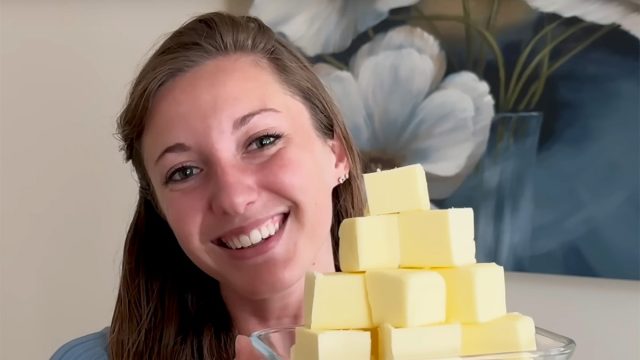8 Warning Signs Your Body Needs More Fat

Struggling with low energy, mood swings, or constant hunger? Your fat intake might be the missing piece. Understanding the right types and amounts of dietary fat can transform your health journey from frustrating to fulfilling. In this guide, certified nutrition health coach and metabolism specialist Lillie Kane, who has helped thousands optimize their nutrition through her popular YouTube channel, shares essential insights about dietary fats and how to optimize them for better health.
Why Your Body Needs Good Fats
[youtube https://youtu.be/UsCiFVx9AmM?si=9-_nOD-Tn_lkde6q expand=1 site_id=26818373]
"Our bodies are made up of cells, and our cells are made up of fat," Lillie explains in her post. "If we consume poor quality fats, our cells reflect this and it impacts our health negatively." She emphasizes avoiding man-made, refined fats and laboratory-processed oils, which have been linked to cell damage and heart disease.
Best Sources of Healthy Fats
Lillie recommends focusing on real, whole-food sources of fat: "Eggs, steak, milk, yogurt, butter, ghee, tallow, coconuts, olives, and avocados are excellent sources." For those who tolerate nuts, she suggests macadamia, walnuts, and pistachios. Fatty fish like salmon, sardines, and mackerel provide valuable omega-3s and heart-healthy fats. Next, she explains the significant symptoms of your body's needing more fat.
RELATED: 8 High-Protein Foods with Nearly Zero Calories That Melt Fat.
Low Energy
"Having low energy" is a primary indicator of insufficient fat intake, Lillie warns. Since fats fuel our bodies, inadequate amounts can leave you feeling drained.
Hormonal Imbalances
"For women, having irregular menstrual cycles or even really painful period cramps" are common signs, says Lillie. "For men, this can include low testosterone and libido."
Mental Fog
"If someone's having a hard time focusing or even memory issues, this could be a sign they're low in fat," Lillie explains. The brain requires adequate fat for optimal function.
Dry Eyes
"Fat can help with lubrication," Lillie notes, making dry eyes a clear indicator of potential fat deficiency.
Constipation
According to Lillie, "dietary fat can help move our bowels through our digestive tract," making constipation a common sign of insufficient fat intake.
Persistent Hunger
Lillie identifies "persistent hunger" as a key sign of low fat intake, as fats play a crucial role in satiety.
Temperature Regulation Issue
"If someone's feeling cold all the time and they just can't seem to get warm, this could be a sign someone's low in fat," Lillie shares.
Emotional Imbalances
"Having emotional imbalances or irritability" indicates potential fat deficiency, as Lillie explains that "fats can help us balance our overall hormones and mood."
Understanding Macronutrient Basics
"Think of protein as the structure of a car, while fats and carbs are the gasoline," Lillie explains. Protein builds the body's components, while fats and carbohydrates provide energy. Fat plays a crucial role in brain function and hormone regulation.
RELATED: 8 High-Protein Foods with Nearly Zero Calories That Melt Fat.
The Fat Formula: Finding Your Perfect Balance
Lillie's approach starts with protein: "Begin with one gram of protein per pound of ideal body weight." From there, she recommends balancing fats and carbs to equal or exceed your protein intake in grams.RELATED: 20 Superfoods for People Over 50
How Much Fat Do You Really Need?
"Most people should aim for at least 100 grams of fat daily," Lillie advises. The exact amount varies based on individual needs and symptoms. Those experiencing mood issues, menstrual irregularities, or concentration problems might benefit from increasing fat intake.
Practical Tips for Fat Implementation
For optimal fat incorporation, Lillie suggests tracking food intake for one week to understand patterns. High-protein, low-fat foods like chicken breast or shrimp need additional fat sources. She recommends using vegetables as fat vehicles, cooking them in healthy fats like bacon fat or ghee.
Personalizing Your Fat Intake
As an example, Lillie shares her personal metrics: "At 5'2" and 115 pounds, I consume 130-140 grams of protein, 130-140 grams of fat, and 80-100 grams of carbs daily." She emphasizes that these numbers should be adjusted based on individual goals and responses.Remember, optimizing your fat intake isn't about following rigid rules but finding what works best for your body. Pay attention to how you feel and adjust accordingly. Your perfect balance of fats might be different from someone else's, and that's perfectly normal. And if you enjoyed this article, take advantage of these 15 Quick Ways to Lose Body Fat Percentage in a Week.




